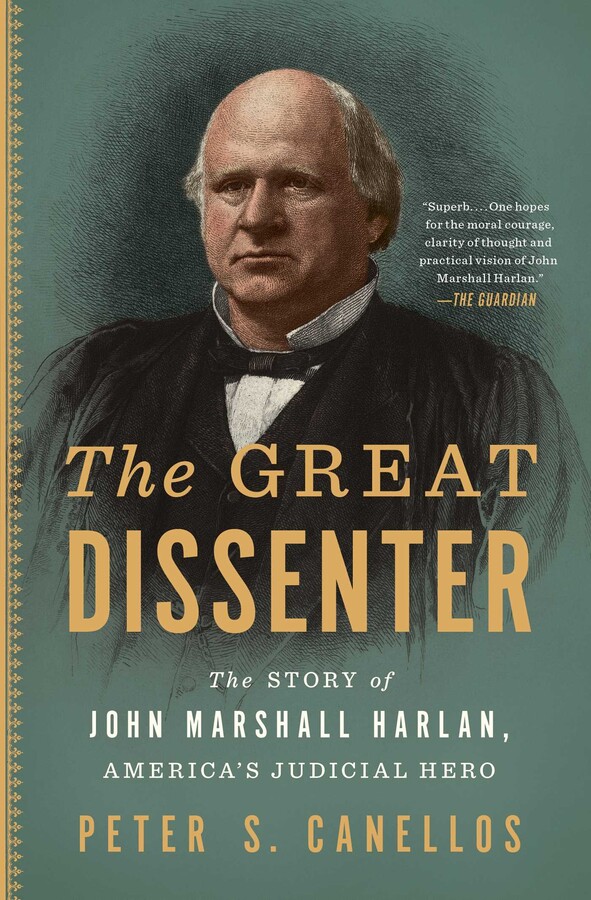I am reading a very good history of one of the most important judges in our nation’s history. The book is called The Great Dissenter: The Story of John Marshall Harlan, America’s Judicial Hero, written by Peter S. Canellos. Here is the description from the publisher:
“They say that history is written by the victors. But not in the case of the most famous dissenter on the Supreme Court. Almost a century after his death, John Marshall Harlan’s words helped end segregation and gave us our civil rights and our modern economic freedom.
“But his legacy would not have been possible without the courage of Robert Harlan, a slave who John’s father raised like a son in the same household. After the Civil War, Robert emerges as a political leader. With Black people holding power in the Republican Party, it is Robert who helps John land his appointment to the Supreme Court.
“At first, John is awed by his fellow justices, but the country is changing. Northern whites are prepared to take away black rights to appease the South. Giant trusts are monopolizing entire industries. Against this onslaught, the Supreme Court seemed all too willing to strip away civil rights and invalidate labor protections. So as case after case comes before the court, challenging his core values, John makes a fateful decision: He breaks with his colleagues in fundamental ways, becoming the nation’s prime defender of the rights of Black people, immigrant laborers, and people in distant lands occupied by the US.
“Harlan’s dissents, particularly in Plessy v. Ferguson, were widely read and a source of hope for decades. Thurgood Marshall called Harlan’s Plessy dissent his “Bible”—and his legal roadmap to overturning segregation. In the end, Harlan’s words built the foundations for the legal revolutions of the New Deal and Civil Rights eras.
“Spanning from the Civil War to the Civil Rights movement and beyond, The Great Dissenter is a “magnificent” (Douglas Brinkley) and “thoroughly researched” (The New York Times) rendering of the American legal system’s most significant failures and most inspiring successes.”






